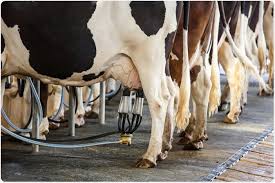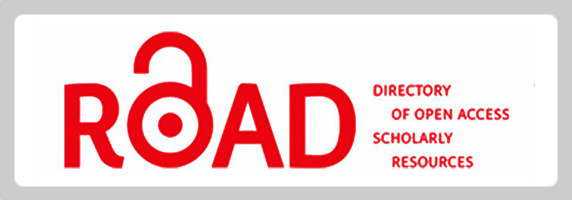Microbial safety, physical properties and chemical composition of cow milk in Ethiopia, A review
Abstract
Ethiopia takes first place in the cattle herd population from Africa. However the production and productivity and quality of milk are low due to various factors such as genetic makeup of the breeds, inadequate and poor quality feed and water resources, and lack of knowledge for appropriate hygienic practices in milk production. Cow milk is recognized as complete human food as it constitutes principal nutritionally important components such as water (87.2%), protein (3.5%), fat (3.7%), milk sugar or lactose (4.9%), ash (0.7%), and dry matter (12.8%). This, on the other hand, makes milk a suitable medium for the growth and multiplication of a variety of pathogenic and spoilage microflora. Research reports of microbial and physicochemical qualities of cow milk published in different Journals have been reviewed in this paper. Studies show that a total bacterial load range of 4.57 and 9.82 log CFU ml-1 has been reported in Hawassa City and Gurage Zone in Southern Ethiopia, respectively as minimum and maximum values. Whereas, a total coliform count of 6.19 log CFU ml-1 was reported in Yabello, Borena Zone as maximum contamination. The minimum value was recorded in Gurage Zone being 4.03 log CFU ml-1. Yeast and mold contamination was also widely studied and reports showed that the highest load of 7.24 log CFU ml-1 was recorded in Abuna Gindeberet District of West Showa Zone. A count as low as 0.622 log CFU ml-1 was reported in the Dawa Chefa District of Amhara Region. As major chemical constituents of cow milk, fat (4.19-6.02 %), protein (3.20-3.98 %), lactose (3.79-5.39 %), SNF (7.60-9.77 %), ash (0.68-0.80 %), total solids (12.02-15.47 %) and a titratable acidity (0.16-0.38 %) were reported in different parts of the country. Moreover, physical parameters of pH and specific gravity ranges of 6.30-6.48 and 1.022-1.06 gm/cm3 were recorded from milk samples studied in parts of Ethiopia. From most of the studies, it could be observed that most of the milk samples are of substandard quality in terms of microbial load according to standards set by different Organizations rendering them unsafe and hazardous for raw consumption and unsuitable for further processing. This indicates the high prevalence of inadequate hygienic practices among the dairy producers which in turn necessitates the delivery of training on the general pre and post-production management of cow milk.
Downloads
References
Abebe, B., Zelalem, Y. and Ajebu, N., 2012. Hygienic and microbial quality of raw whole cow’s milk produced in Ezha district of the Gurage zone, Southern Ethiopia. Wudpecker J. Agri. Res. 1(11): 459 – 465
American Public Health Association, 1992. APHA method 9221: Standard Method For the Examination of Water and Waste Water, 18th ed. Washington DC.
Asaminew, T. and Eyassu, S., 2011. Microbial quality of raw cow’s milk collected from farmers and dairy cooperatives in Bahir Dar Zuria and Mecha district, Ethiopia. Agric. Biol. J. of N. Am. 2(1): 29-33.
Biruktawit, SH., 2016. Physicochemical Properties And Microbial Quality Of Cow Milk Collected From Selected Sub-city Of Addis Ababa, Ethiopia. M.Sc Thesis, Addis Ababa University, College of veterinary Medicine and Agriculture, Department of Animal Production Studies.
Bodman GR and Rice DN (1996) Bacteria in Milk in Source and Control. University of Nebraska and United State Department of Agriculture, USA.
Chambers JV., 2002. The microbiology of raw milk in Dairy Microbiology Handbook. 3rded. R. K. Robinson, ed. John Wiley & Sons Inc., New York.
CSA, 2011. Agricultural Sample Survey. Central Statistical Authority. Survey Report on Livestock and Livestock Characteristics (Private Peasant Holding. Volume II. Addis Ababa, Ethiopia, pp: 9-26
Derese, T. 2008. Present situation of urban and periurban milk production and quality of raw milk produced in west Shewa Zone, Oromia Region. MS.c. Thesis, Haramaya University, Haramaya, Ethiopia.
EAS, 2007. Raw Cow Milk – Specification. East African Community (EAC 67:2007) standard. pp 1 - 19.
FAO/WHO, 2006. Benefit and Potential Risk of the Lactoperioxidase system of Raw milk preservation. Report of an FAO/WHO Technical Meeting FAO Head Quarters, 28th, Nov 2nd Dec, 2005, Rome, Italy.
Fekadu, B., 1994. Present situation and future aspects of milk production, milk handling and processing of dairy products in Southern Ethiopia. PhD Dissertation presented to Agricultural University of Norway
Food and Agriculture Organization (FAO), 1988. The Technology of Traditional Milk Products in Developing Countries. Animal production and Health Paper. No. 85. Food and Agriculture Organization of the United Nations. Rome, Italy.
Fufa, A., Nigus, T., Fikru, R., Dinka, A. and Kebede, A., 2019. Handling Practices, Quality and Safety of Milk along the Dairy Value Chains in Selected Sub Cites of Addis Ababa, Ethiopia. Biomed J. Sci. & Tech. Res. Vol. 13(1): 9652-9665
Gamal, M. H., Arafa, M. S. M. and Soad, M. G., 2015. Microbiological quality and safety of fluid milk marketed in Cairo and Giza Governorates. Current Research in Dairy Science, 7 (1): 18-25.
Gurmessa, T. 2015. Microbiological quality and impact of hygienic practices on raw cow's milk obtained from pastoralists and market. The case of Yabello District, Borana zone, Ethiopia. Global Journal of Food Science and Technology, 3: 153-158.
Hawaz, E., Tarekegn, G., Yonas, H., Eyassu, S., Mengistu, K. and Mohammed, A., 2015. Physicochemical Properties and Microbial Quality of Raw Cow Milk Collected from Harar Milkshed, Eastern Ethiopia. J. Biol. Chem. Research. Vol. 32, No. 2: 606-616.
Heeschen W.H. (1997). The Significance of Pathogenic Micro-Organisms in Raw Milk. International Dairy Federation.
Legesse, A., Adamu, F., Alamirew, K., Feyera, T., 2017. A Comparative Study on the Physicochemical Parameters of Milk of Camel, Cow and Goat in Somali Regional State, Ethiopia. Chem Sci J 8: 171. doi:10.4172/2150-3494.1000171
Melese, A. and Tesfaye, W. 2015. Bacteriological quality and safety of raw cow’s milk in and around Jigjiga City of Somali Region, Eastern Ethiopia. International Journal of Research Studies in Biosciences (IJRSB), 3 (5): 48-55.
Nalwaya, S.B., Prajapati, B.I., Bariya, A.R., Goswami, M.M. and Roy, S.K., 2018. Evaluation of Physico-Chemical and Microbiological Quality of Milk of Banaskantha District, India. Int. J. Curr. Microbiol. App. Sci. 7(12): 1635-1641
Nanu, E., Latha, C., Sunil, B. and Thomas, M., 2007. Quality assurance and public health safety of milk at the production point. American Journal of Food Technology 2: 145-152.
O’Connor, C.B., 1993. Traditional Cheese Making Manual. ILCA (International Livestock Center for Africa), Addis Ababa, Ethiopia. 43 pp.
O’Connor, C.B., 1995. Rural Dairy Technology ILRI Training Manual I, International Livestock Research Institute, Addis Ababa, Ethiopia.
Rahel. N., 2008. Traditional and Improved Milk and Milk Products Handling Practices and Compositional and Microbial Quality of Milk and Buttermilk in Delbo Watershed of Wolayta Zone, M.Sc.Thesis. Department of Animal and Range Sciences, Hawassa College of Agriculture, School of Graduate Studies, Hawassa University, Ethiopia.
Solomon, A., Mitku, E., Getachew, A. and Kefyalew, G., 2015. Microbial Quality of Cow Milk in Dawa Chefa District, Amhara Region, Ethiopia. J. Adv. Dairy Res. 3:2. DOI: 10.4172/2329-888X.1000135.
Spreer, E., 1998. Milk and Dairy Product Technology. Marcel Dekker Inc, New York, USA.
Tadele, A., Ameha, K., Yoseph, M. and Mitiku, E., 2016. Microbiological Quality of Raw Cow Milk across the Milk Supply Chain in Eastern Ethiopia. East African J. of Sci. 10(2): 119-132.
Tadesse, A., Galmessa, U., & Bekuma, A., 2020. Milk Handling, Processing Practices and Quality Evaluation. Global Journal of Animal Scientific Research, 8(1), 56-74.
Teshome, G. and Tesfaye, A., 2016. Physicochemical Properties and Microbial Quality of Raw Cow Milk Produced by Smallholders in Bench Maji-Zone, Southwestern Ethiopia. J. Food Sci. and Qual. Manag. Vol. 55: 55-62.
Torkar KG, vengust A (2008) The presence of yeasts, moulds and aflatoxin M1 in raw milk and cheese in Slovenia. Food control 19: 570-577.
Walstra P, Geurts TJ, Noomen A, Jellema A and Van Boekel MAJS (1999). Dairy Techniology: Principles of Milk Properties and Processes. 1st.ed. Newyork: Marcel Dekker. PP 149-170.
Wanjala, G.W., Mathooko, F.M., Kutima, P.M. and Mathara, J.M., 2017. Microbiological Quality And Safety Of Raw And Pasteurized Milk Marketed In And Around Nairobi Region. African J. F. Agri. Nutri. and Develop. 17(1): 11518-11532.











